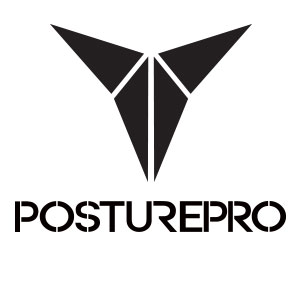What Are The Links Between Your Brain And Your Muscles?
Movement is at the core of human evolution and is reflected by the practice of modern sports in our society. When we think about the strength, we think of muscles. We also think of weight lifting, proper supplementation, sleep quality and proper eating habits.
Not many of us think that postural imbalances can lead to a disruption of hormone levels production such as the growth hormone, circadian cycle, libido, heavy or irregular periods, thyroid function and adrenal fatigue.
What is the link between posture and muscle strength?
What is the link between posture and hormones production?
What is the link between posture and weight gain?
To answer these questions, I first need to describe how our posture is the resultant of three things.
- Awareness: Our brain is built as such that we have a somatotopy (sensory homunculus) arrangement in the brain that gives us sensory information about our entire body’s position in space. This information is relayed to the brain though the body’s sensors (feet, eyes, skin, muscles, inner ear).
- Movement: The information is then processed in the motor part of the brain (motor homunculus) and travels down tracts or pathways. Each tract handles their own different and specialized tasks that have specific functions. For movement to occur effectively, one must have a good representation of their sensory and motor homunculus.
- Muscles: In order to move efficiently, one must have a good symmetry of muscle tone.
Posture is then resultant of how the brain processes the information it receives from sensors in order to move the skeletal muscles optimally. The brain receives information from the sensors (sensory) and processes it (central computer) and projects the information to the muscles (effectors).
When the information transmitted by the sensors is asymmetrical, it engenders in the brain an adaptation reflex that triggers a new pathological postural adjustment which the body considers to be normal. If the postural imbalances are not addressed, the brain will continue to function with this pathological program (compare this to a virus in the software of your computer) and it will be incapable of correcting itself.
What is the link between posture and muscle strength?
An athlete can only be as strong as their posture allows them to be. Take the pull up for example.
A subject representing an anterior scapular plane will have limited shoulder flexion which will affect the quality and strength of their pull up.
To immediately increase pull up strength, the sagittal plane must be brought back to an optimal center of gravity.
The picture below represents the center of gravity and the postural imbalances of an athlete. It was recorded before Posturology. Purple shows energy expenditure and postural asymmetries in the frontal plane. Green shows the effects of oxygen consumption on the sagittal plane (efficient oxygen consumption is affected by posture).
The red dots are with the eyes open and the blue dots are with eyes closed.
After postural corrections, we can clearly see an immediate improvement on the athletes postural strategies, instability and energy expenditure. The red here is before Posturology and the blue is after Posturology. These results were obtained in 50 seconds and the athlete is now capable of heading for the gold medal.
The future will demonstrate that neurology has more to do with functional training than previously thought and Posturology will be at the forefront of the revolution. Biomechanics will always be the nuts and bolts of Kinesiology, but let us be ones that will demonstrate that Posturology can be the software that unites the parts and provides the results.
If you like this article, please share the love.
The Posturepro Team
Copyright © 2014 Posturepro™







